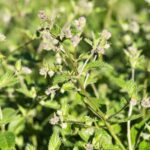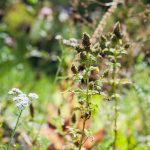Are you interested in starting a vegetable garden in Salt Lake City? Vegetable gardening in Salt Lake City offers its own unique set of challenges and rewards due to the region’s climate and soil conditions.
In this article, we will provide valuable information on how to successfully start and maintain a thriving vegetable garden in Salt Lake City. Whether you are a beginner or an experienced gardener, you will find useful tips and resources to help you grow your own delicious and nutritious produce right in your backyard.
Salt Lake City’s climate can be challenging for vegetable gardening, but with the right knowledge and techniques, it is absolutely possible to have a successful harvest. From choosing the right vegetables to preparing the soil, planting, maintaining, dealing with pests and diseases, watering, irrigation, harvesting, preserving, and utilizing community resources – this article will cover everything you need to know to become a successful vegetable gardener in Salt Lake City.
By embracing vegetable gardening in Salt Lake City, not only will you be able to enjoy fresh homegrown produce but also contribute to a healthier lifestyle while reducing your carbon footprint. Through this article’s guidance and support from local resources, you can create a bountiful vegetable garden that will thrive and provide a sense of fulfillment as you watch your delicious fruits of labor grow.
Choosing the Right Vegetables for the Salt Lake City Climate
When it comes to vegetable gardening in Salt Lake City, selecting the right vegetables is crucial for a successful harvest. The unique climate and soil conditions in Salt Lake City require careful consideration when choosing which vegetables to grow.
First and foremost, it’s important to choose vegetables that are well-suited to the short growing season in Salt Lake City. Hardy and fast-maturing vegetables such as lettuce, spinach, radishes, and carrots are excellent choices for this region. These vegetables can tolerate the cooler temperatures in spring and fall, allowing for an extended growing season.
In addition to considering the growing season, it’s also important to select vegetables that can withstand the hot and dry summers in Salt Lake City. Heat-tolerant plants like tomatoes, peppers, eggplant, and squash thrive in this climate and can produce bountiful harvests if properly cared for. Additionally, drought-resistant varieties of vegetables such as beans, peas, and Swiss chard are well-suited to the arid conditions of Salt Lake City.
Best Vegetables for Vegetable Gardening in Salt Lake City
| Vegetable | Reasons for Suitability |
|---|---|
| Lettuce | Fast-maturing and able to tolerate cooler temperatures |
| Tomatoes | Heat-tolerant and suitable for hot summers |
| Swiss Chard | Drought-resistant and can thrive in arid conditions |
Preparing the Soil for Vegetable Gardening
When it comes to vegetable gardening in Salt Lake City, one of the most crucial steps is preparing the soil. The right soil will provide proper nutrients for your vegetables to thrive, so it’s important to take this step seriously. Here are some tips for preparing the soil for your vegetable garden in Salt Lake City:
1. Test the Soil: Before you start planting, it’s essential to test the pH level and nutrient content of your soil. You can easily find at-home testing kits or send a sample to a local extension service for analysis.
2. Amend the Soil: Based on your soil test results, you may need to amend the soil with organic matter such as compost or well-rotted manure to improve its texture and fertility.
3. Remove Weeds and Debris: Clear the area of any weeds, rocks, or debris that could hinder the growth of your vegetables.
Once you’ve prepared your soil, you’re one step closer to a successful vegetable garden in Salt Lake City. Taking the time and effort to properly prepare the soil will pay off in abundant and healthy harvests of home-grown produce.
Remember that preparing the soil is just one part of successful vegetable gardening in Salt Lake City-choosing the right vegetables for the climate and maintaining your garden are also essential steps for a thriving garden. By following these tips and best practices, you’ll be well on your way to enjoying a bountiful harvest from your own backyard vegetable garden in Salt Lake City.
Best Practices for Planting and Maintaining Vegetable Gardens in Salt Lake City
When it comes to vegetable gardening in Salt Lake City, there are some best practices to keep in mind in order to ensure a successful and bountiful harvest. From selecting the right plants to caring for them throughout the growing season, following these guidelines can help you make the most of your gardening efforts.
Choosing the Right Plants
One of the first steps in planting and maintaining a vegetable garden in Salt Lake City is choosing the right plants for the local climate. Opt for vegetables that are well-suited to cooler temperatures and shorter growing seasons, such as carrots, lettuce, radishes, and spinach.
Additionally, consider heat-resistant varieties of tomatoes, peppers, and squash to withstand the warmer summer months. Researching which plants thrive in Salt Lake City’s unique climate can set your garden up for success from the start.
Soil Preparation
Proper soil preparation is crucial for the health of your vegetable garden. Before planting, be sure to amend your soil with organic matter such as compost or well-rotted manure to improve its structure and fertility. Consider having a soil test done to determine any necessary adjustments to pH levels or nutrient deficiencies. By providing your plants with nutrient-rich and well-draining soil, you can help them establish strong root systems and better withstand environmental stressors.
Maintenance Throughout the Season
Once your vegetable garden is planted, ongoing maintenance is key to ensuring healthy growth and abundant yields. Regular watering is essential; be sure to water deeply and infrequently to encourage deep root growth. Mulching around plants can help conserve moisture, suppress weeds, and regulate soil temperature. Additionally, stay vigilant against pests and diseases by regularly inspecting plants for signs of trouble and addressing issues promptly using organic methods whenever possible.
By following these best practices for planting and maintaining vegetable gardens in Salt Lake City, you can nurture a productive garden while enjoying all that homegrown produce has to offer.
Dealing With Common Pests and Diseases in Salt Lake City Vegetable Gardens
When it comes to vegetable gardening in Salt Lake City, one of the biggest challenges that gardeners face is dealing with common pests and diseases. However, with the right knowledge and practices, it is possible to minimize the impact of these threats on your precious crops.
Identifying Common Pests and Diseases
Before you can effectively deal with pests and diseases in your Salt Lake City vegetable garden, it’s important to be able to identify them. Some common pests in the area include aphids, cutworms, and flea beetles, while diseases such as powdery mildew and blossom end rot can also affect your plants. By regularly inspecting your plants for any signs of damage or discoloration, you can catch these issues early on.
Natural Pest Control Methods
One effective way to control pests in your vegetable garden without resorting to harmful chemicals is by introducing natural predators that feed on common pests. For example, ladybugs are known to eat aphids, while birds can help keep insect populations in check. Additionally, practicing crop rotation and using companion planting techniques can help disrupt pest life cycles and protect your plants.
Disease Prevention Strategies
To prevent diseases from taking hold in your Salt Lake City vegetable garden, it’s crucial to start with healthy soil. Amending the soil with organic matter, such as compost or well-rotted manure, can improve its structure and fertility while also enhancing its ability to resist disease. Additionally, practicing good sanitation by removing diseased plant material and providing adequate air circulation around your plants can help prevent the spread of diseases.
By being proactive and incorporating these strategies into your vegetable gardening in Salt Lake City, you can effectively deal with common pests and diseases while fostering a healthy and thriving garden.
Tips for Watering and Irrigation in Salt Lake City Vegetable Gardens
When it comes to vegetable gardening in Salt Lake City, proper watering and irrigation are essential for the success of your garden. The arid climate and high elevation of Salt Lake City present unique challenges for gardeners, but with the right techniques, you can ensure that your vegetables thrive. Here are some tips for watering and irrigation in Salt Lake City vegetable gardens:
- Choose drought-tolerant vegetables: Selecting vegetables that are well-suited to the arid climate of Salt Lake City can help reduce the amount of water needed for your garden. Consider planting crops such as tomatoes, peppers, squash, and beans, which are known for their tolerance to dry conditions.
- Implement drip irrigation: Drip irrigation is a highly efficient method of delivering water directly to the roots of plants, minimizing evaporation and waste. Installing a drip irrigation system in your vegetable garden can help conserve water and ensure that your plants receive the moisture they need.
- Water deeply and infrequently: Instead of frequent shallow watering, aim to water your vegetable garden deeply but less frequently. This encourages deep root growth and makes plants more resilient to drought conditions.
In addition to these tips, it’s important to monitor soil moisture levels regularly and adjust your watering schedule accordingly. Keep an eye on weather patterns and be prepared to increase or decrease watering as needed. By implementing these practices, you can maintain a thriving vegetable garden in Salt Lake City while conserving water in this arid climate.
Harvesting and Preserving Your Home-Grown Vegetables in Salt Lake City
Once your vegetable garden in Salt Lake City has flourished, it’s time to reap the rewards of your hard work and enjoy the fruits of your labor. The key to successful harvesting is timing. It’s important to pick vegetables at their peak ripeness for the best flavor and texture. Keep in mind that different vegetables have different harvesting times, so it’s essential to research each specific plant in your garden.
After harvesting, you may find yourself with an abundance of fresh produce. Preserving the surplus vegetables will allow you to enjoy them long after the growing season has ended. There are several methods for preserving vegetables, including canning, freezing, dehydrating, and pickling. Each method comes with its own set of instructions, so be sure to do thorough research on how to properly preserve each type of vegetable from your garden.
In addition to traditional preservation methods, consider sharing your home-grown vegetables with friends, family, or even local food banks if you have a surplus. Embracing the sense of community that comes with vegetable gardening in Salt Lake City can make the experience even more rewarding.
Additionally, connecting with fellow gardeners can provide opportunities for trading produce and sharing tips for successful vegetable gardening in the region. Utilizing these community resources can help ensure that no harvest goes to waste while fostering a sense of camaraderie among local gardeners.
Community Resources for Vegetable Gardeners in Salt Lake City
As a vegetable gardener in Salt Lake City, it’s important to take advantage of the resources available to you in the community. Whether you are a beginner or an experienced gardener, there are numerous organizations and groups that can provide valuable support and information to help you succeed in your gardening endeavors.
One valuable resource for vegetable gardeners in Salt Lake City is the local agricultural extension office. The Utah State University Extension provides a wealth of knowledge on topics such as soil testing, pest management, and overall plant health. They often offer workshops, classes, and seminars specifically tailored to the needs of vegetable gardeners in the area.
Another great community resource for vegetable gardeners is local gardening clubs and associations. These groups provide opportunities for networking with other gardeners, sharing tips and advice, and even participating in community gardens or plant swaps. The Utah Organic Gardeners Association is one such organization that offers support to those looking to grow organic fruits and vegetables in the region.
Additionally, Salt Lake City has several farmers’ markets where you can not only find fresh produce but also connect with local growers and learn from their experiences. Attending these markets can be a great way to gain insight into what grows well in the area and to establish relationships with fellow vegetable gardeners.
It’s important for vegetable gardeners in Salt Lake City to take advantage of these community resources to enhance their gardening knowledge and skills while also forging connections with like-minded individuals.
| Community Resource | Description |
|---|---|
| Utah State University Extension | Provides workshops, classes, and seminars tailored to vegetable gardening |
| Local Gardening Clubs/Associations | Opportunities for networking, sharing tips, participating in community gardens |
Conclusion
In conclusion, vegetable gardening in Salt Lake City offers a multitude of rewards for those who are willing to put in the time and effort. By selecting the right vegetables for the local climate, preparing the soil properly, and implementing best practices for planting and maintenance, residents can enjoy an abundant harvest of home-grown produce.
Despite the challenges posed by pests, diseases, and the need for proper watering and irrigation, with careful attention and dedication, gardeners can successfully cultivate thriving vegetable gardens in Salt Lake City.
Furthermore, as more individuals embrace the benefits of vegetable gardening in Salt Lake City, community resources have also expanded to support this endeavor. From local gardening clubs and workshops to access to expert advice at nurseries and seed exchanges, there are numerous opportunities for novice and experienced gardeners alike to connect and learn from one another.
This sense of community not only fosters a shared passion for sustainable living but also provides valuable support for those seeking guidance on their gardening journey.
Ultimately, embracing the rewards of vegetable gardening in Salt Lake City goes beyond just reaping a bountiful harvest. It also encourages a deeper connection to the earth, promotes healthier eating habits, reduces reliance on store-bought produce, and fosters a greater appreciation for nature’s cycles.
As residents continue to engage in vegetable gardening, they not only contribute to creating more sustainable urban environments but also experience the satisfaction of cultivating their own food right in their backyard – or even on their balcony or patio.
Frequently Asked Questions
When Should I Start a Vegetable Garden in Utah?
The best time to start a vegetable garden in Utah is typically in late April or early May. This allows the soil to warm up and reduces the risk of frost damaging young plants.
What Can You Grow in Salt Lake City?
Salt Lake City’s climate is ideal for growing a variety of vegetables including tomatoes, peppers, spinach, kale, carrots, radishes, and lettuce. Additionally, fruits like apples, cherries, and peaches can also thrive in this area.
What Vegetables Are Good to Grow in Utah?
There are several vegetables that are well-suited for growing in Utah’s climate. These include broccoli, cauliflower, Brussels sprouts, potatoes, onions, peas, beans, squash, and pumpkins. These vegetables can handle the hot summers and occasional late spring frosts that are common in Utah.

If you’re looking to get into vegetable gardening, or are just looking for some tips on how to make your current garden better, then you’ve come to the right place! My name is Ethel and I have been gardening for years. In this blog, I’m going to share with you some of my best tips on how to create a successful vegetable garden.





